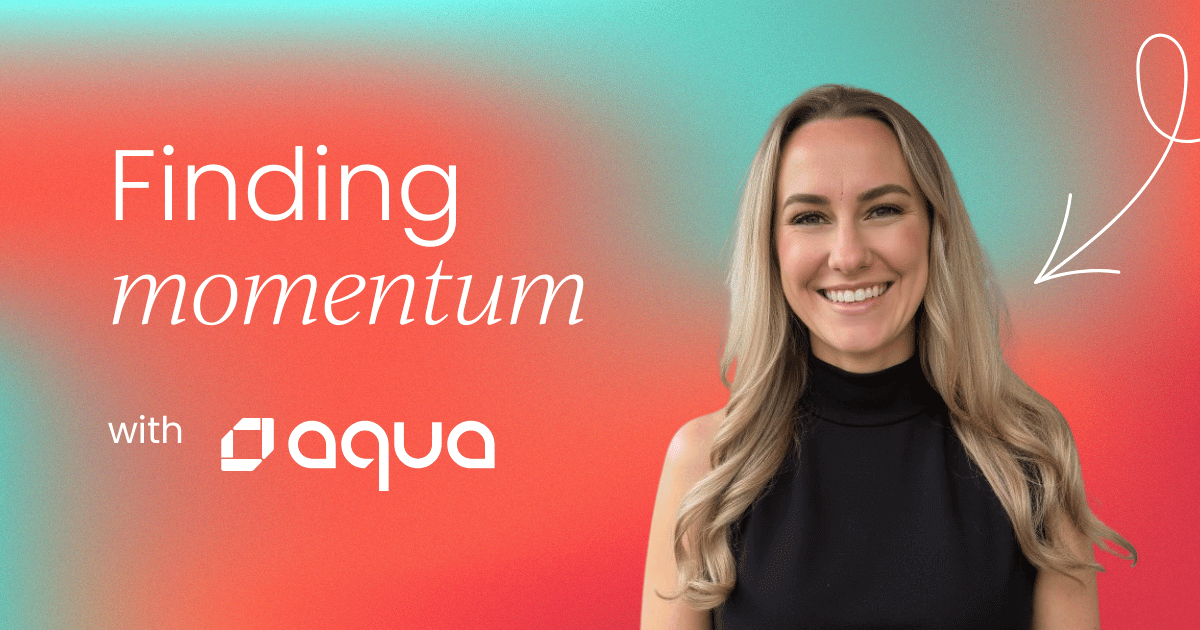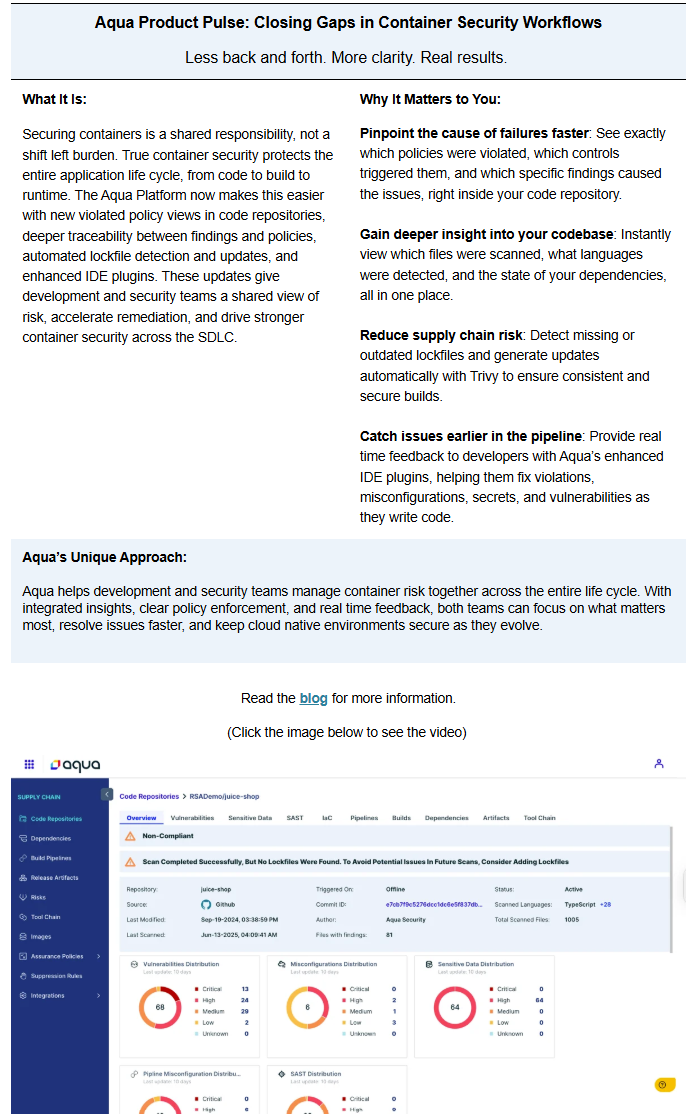
There’s a rhythm most product marketers know too well. One quarter, it’s go time with a high-stakes product launch, and the next, it’s quiet. No net new features. No major campaigns. Just long-awaited infrastructure work, bug fixes, and foundational rebuilds. Important work, but not always the kind that makes headlines or that fuels your KPIs.
So, what do you do when your roadmap goes quiet?
This is a challenge I recently faced. With customer retention and upsell as key OKRs, I couldn’t afford to sit idle during the quieter quarters. I needed a new way to stay top of mind with customers, reinforce our product’s value, and support go-to-market teams without relying on a shiny new feature launch to get us there.
In this post, I’ll share how I built Product Pulse, a lightweight but high-impact monthly program designed to refresh messaging, highlight value, and drive engagement for product launches and enhancements. Whether your roadmap is quiet or you’re simply trying to get more from what you’ve already built, this approach can help you deliver meaningful momentum.
When the roadmap goes quiet
One of the most important lessons I’ve learned as a product marketer is that no one cares about your launch as much as you do. It is a sad but honest truth that anyone working in B2B tech or SaaS eventually comes to understand.
Customers are juggling dozens of tools, each with constant updates. Internal go-to-market teams are just as overwhelmed; sales, customer success, and partner teams are expected to keep up with product changes while focusing on their own goals, often without a clear way to absorb or act on new information.
As product marketers, we can spend months preparing for a launch, determining strategy, refining messaging, enabling teams, and building campaigns, only to realize that even our most exciting features can go unnoticed. If the right person doesn’t see the right message at the right time, it might as well not exist.
This challenge becomes even more difficult when the product roadmap is quiet.
Building retention without new releases: A case study
In my current role, we were coming off a period of intense product delivery and entering a quarter focused on technical infrastructure and long-term improvements. These updates were important, but they weren’t easily packaged into customer-facing campaigns. There were no major releases to spotlight, and yet our targets for retention and growth remained the same.
We needed to help our customers get more value from what they already had, while reinforcing that the product continued to evolve in meaningful ways.
Staying top of mind without a major announcement meant finding new ways to surface value. I partnered closely with our customer success team to understand what was holding customers back, and the insight was clear. Many users didn’t know about features we had already released. These were enhancements driven by their feedback, but they weren’t being seen or used.
Our current process wasn’t working. Expecting customers to read detailed release notes was unrealistic, and our newsletter had become a collection of lengthy updates that weren’t always directly related to the product experience. Without clear visibility into what had changed or why it mattered, customers were missing out on value that was already available to them.
That insight matched what we were hearing in the market. Around the same time, Gartner published recommendations encouraging SaaS leaders to focus on value optimization. Instead of adding more tools or expanding budgets, organizations were being asked to get more out of the platforms they already had.
That message resonated; if we wanted to support retention and drive growth, we didn’t need something new to promote. We needed to tell a better story about what we had already delivered.
That is what led to the Product Pulse email campaign. It became a way to reintroduce existing capabilities, help customers connect them to real-world problems, and provide internal teams with clear, actionable content they could use in the field.
Building Product Pulse
Product Pulse started as a monthly email that focused on one product enhancement at a time. The twist was that most of what we featured was not new.
I went back through the last six to twelve months of releases and uncovered a goldmine of underleveraged features. Some had launched quietly with a single blog post and no demo. Others were small updates that, when combined, told a much more compelling story.
Rather than simply resurfacing these features, I reframed how we talked about them. Each piece of content followed a simple structure:
- What is it?
- Why does it matter to you?
- How do we do it differently?
That became the heartbeat of every Product Pulse. I rewrote the messaging to focus on the real-world problem the feature was built to solve. I stripped away internal language and centered the story on the customer’s perspective. We didn’t just explain the functionality; we explained the impact from the customers’ viewpoint.

Each monthly update included a short, scannable email, a refreshed blog post, a 90-second demo video, and a link to the release notes. Together, this campaign gave customers a clear understanding of the value and a quick path to action.
On the internal side, I created one-page cheat sheets for sales and customer success. These mirrored the same framing, making it easy for teams to forward the content or use it as a talk track in customer conversations. We also extended each update with a branded post on LinkedIn to reach the broader community and reposted on behalf of our sellers.
By building on what we already had, updating the story around it, and anchoring everything in customer value, Product Pulse gave us a way to show up consistently even when nothing new was launching.
What worked and why
Product Pulse worked because it met customers where they were. Instead of overwhelming them with a long list of updates, we delivered one clear message at a time. The emails were easy to scan, the demos were quick to watch, and the blogs gave just enough context for someone to understand the benefit and move forward.
We also learned that variety in format was essential. Some customers preferred watching the demo. Others preferred reading the blog. By providing options, we increased the chance that someone would engage at all.
On the internal side, the cheat sheets became a reliable tool. Sales and customer success teams could quickly pick up the narrative and use it in account conversations. It wasn’t just easier for customers to understand; it was easier for teams to share and to re-engage with customers who might have stalled in onboarding or were in the middle of renewal negotiations.
Even though Product Pulse wasn’t built around big announcements, it helped us establish a consistent rhythm. It created the sense that we were always improving and always showing up with something relevant and proving to our customers and the market that we were indeed investing in our product and innovating in the right areas.
The results
Product Pulse consistently outperformed our traditional customer newsletter across every major engagement metric.
We defined engagement as customers who opened the email and took meaningful action, such as clicking through to a blog post, watching a demo video, or viewing the release notes. Based on that standard, Product Pulse delivered significantly stronger results.
Campaigns saw a 137% increase in account engagement and a 179% lift in contact engagement compared to the newsletter. Engagement rates followed the same trend; Product Pulse achieved a 116% higher contact engagement rate and a 132% higher account engagement rate.
Most importantly, the engagement was meaningful. Customers weren’t just clicking; they were rediscovering product value, reconnecting with their customer success managers, and asking about features they hadn’t realized were available.
Internally, the content became a resource for go-to-market teams to spark conversations around adoption and expansion. Product Pulse helped create visibility, alignment, and forward momentum, all using content that already existed.
Key takeaways for PMMs
If your roadmap is quiet this quarter – or even if it isn’t but you feel your launches aren’t landing – there’s a huge opportunity in reframing how you think about product marketing momentum.
- Don’t wait for net new features: Go back and find what’s worth revisiting. A good feature with weak packaging is a missed opportunity.
- Center the story around customer value: Always ask why they should care, and let that drive your message instead of the technical spec sheet.
- Be intentional with packaging: Three small updates can make a bigger impact when framed around a single problem or use case.
- Give your go-to-market teams content they’ll actually use: If it’s too long or too technical, it won’t get shared.
- And above all, respect how people learn: Some will read the blog; some will watch the demo. If resources allow, then design for both.
Quiet quarters don’t have to mean quiet marketing. With a little creativity and a lot of customer empathy, you can create momentum out of what you already have and make sure the value your team has built actually gets seen.


